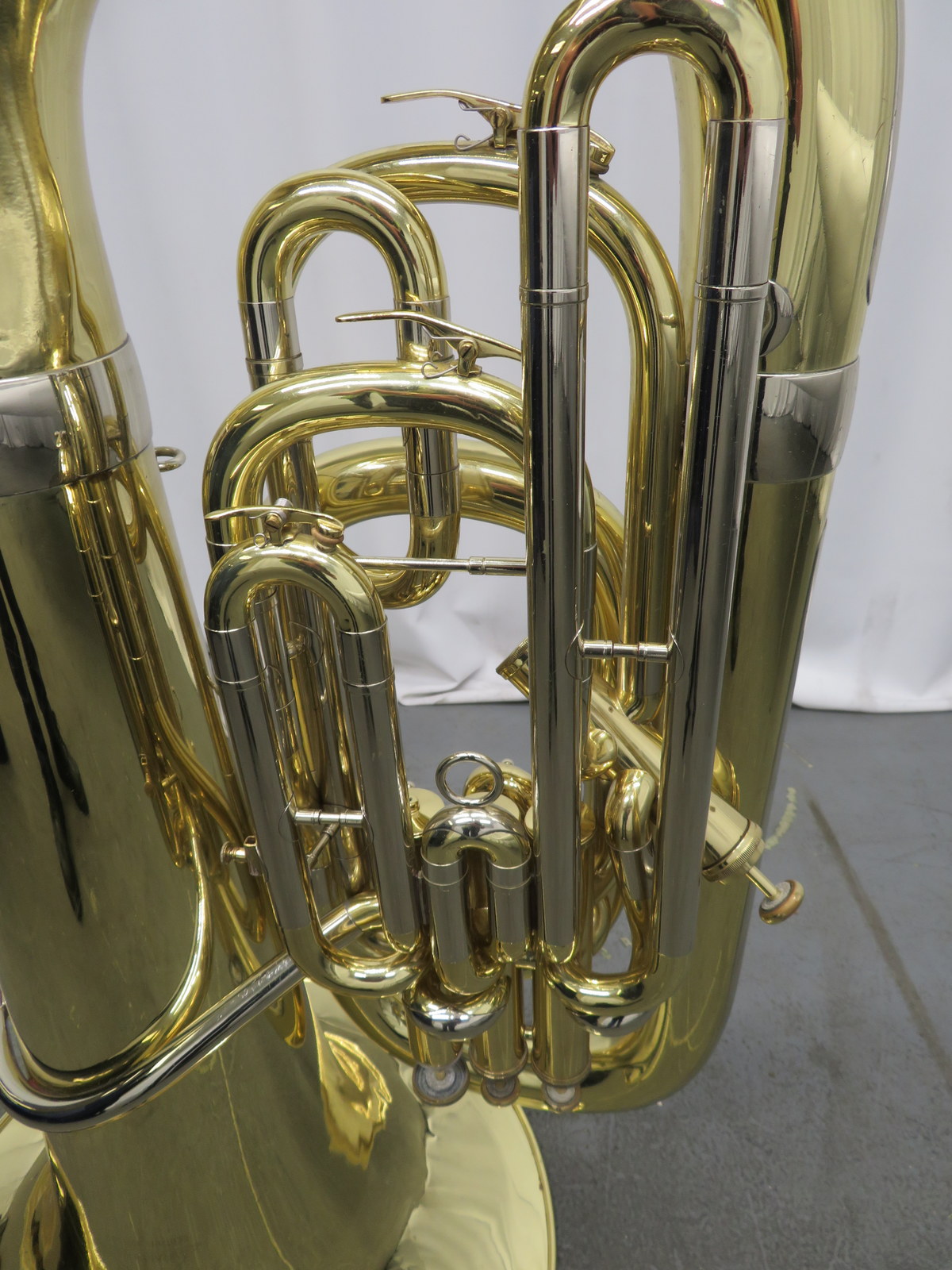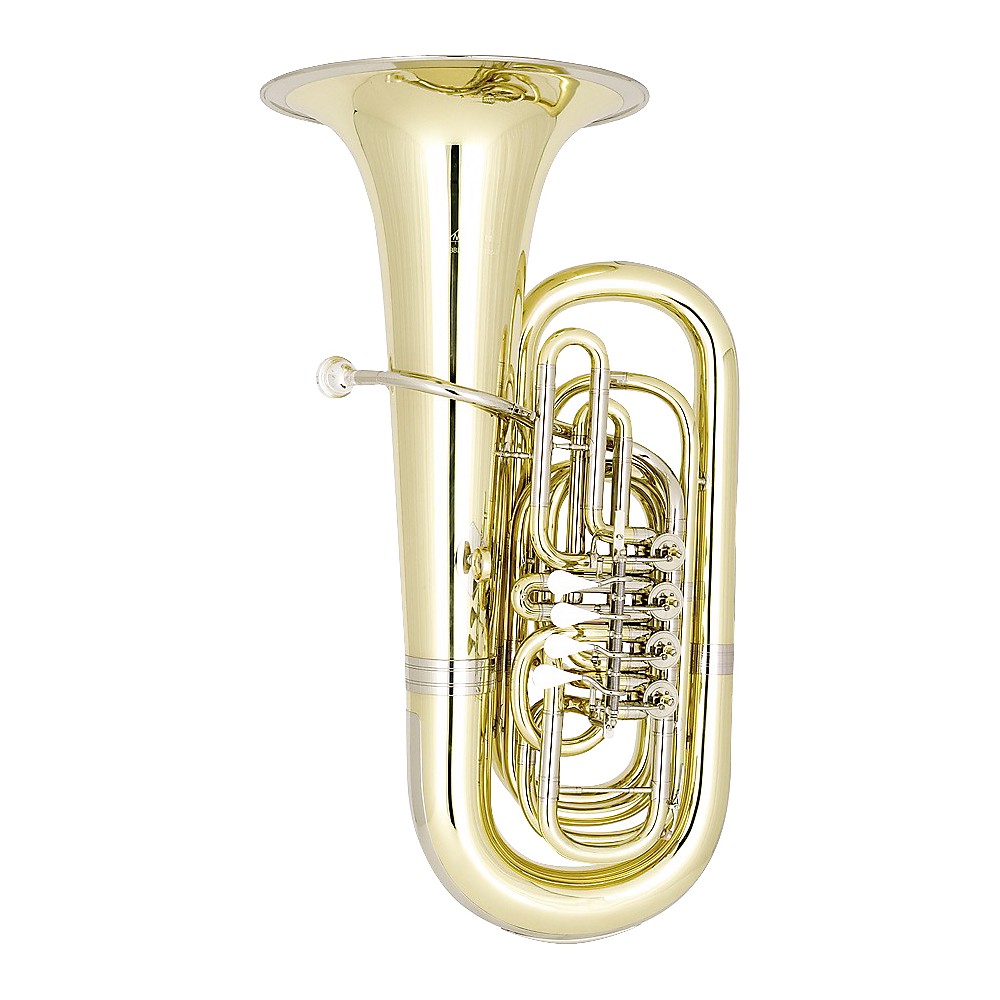

Unlike the Alexander, which runs vertically, the various VEB/B&S/Knoth/Knopf/Wunderlich decided to run a horizontal side loop. Many of the various F-Tubas from Markneurkirchen/Klingenthal with 5 or 6 valves, used this interesting layout for the 5th and 6th valves. The nice forged nickelsilver bell to leadpipe brace is lovely to look at when compared to the modern stamped versions.īefore moving on, a quick note regarding the valve tubing layout. The receiver, like many mid 20th century DDR F-Tubas uses a bass trombone sized shaft and is the time honored sleeve system.

The taper stretches over a 60cm length (about 50cm +- for the Symphonie) and features a more gradual taper rate from 14 to 18.50mm rather than 13 to 18mm for the Symphonie, clearly something quite different. The leadpipe itself shares more in common with earlier VEB designs than the Symphonie.

The valve block itself is a cylindrical bore of 18.50mm and features the somewhat more restrictive porting of the 1930s Hess block(compared to the later 1970s B&S style). While similar to the Symphonie, the smaller side of the top bow takes into account the smaller sized valve block (18.50mm vs 21mm) and tapers at a far faster rate, resulting in a smaller top bow and narrower tuning slide. The top bow is where things start to diverge. Clearly the 1950s VEB factory to their credit were likely aware of these issues, as the various prototypes I’ve seen, kept improving on these fronts. Like the Alexander F-tubas the Hess and later VEB versions all seemed to suffer from similar issues, such as general intonation and poor response, especially in the infamous F-Tuba low register D-Db-C. Like the Hess, these early tubas were based off of designs brought from Alexander by designer Cronlein in the 1930s. The design of the pre 1960 Fs were carried over from the previous Hess firm in Klingenthal. Clearly those tubas had room for improvement. He went on to mention that after receiving a new Symphonie, he considered leaving the old VEB on the street corner because “I would have felt bad selling it to a friend”. It was in his words, “a dreadful instrument, that could be made to work, but required great concentration”. My recently retired colleague Georg Schwark of Rundfunk Berlin fame, had just such an instrument when he first started playing tuba. To be brutally honest, most of the prototypes left much to be desired in terms of playability. The vast majority of these prototypes were considerably smaller than the Symphonie, both in bore and body size, usually a modified B&S Model 92 as they were later known.


 0 kommentar(er)
0 kommentar(er)
